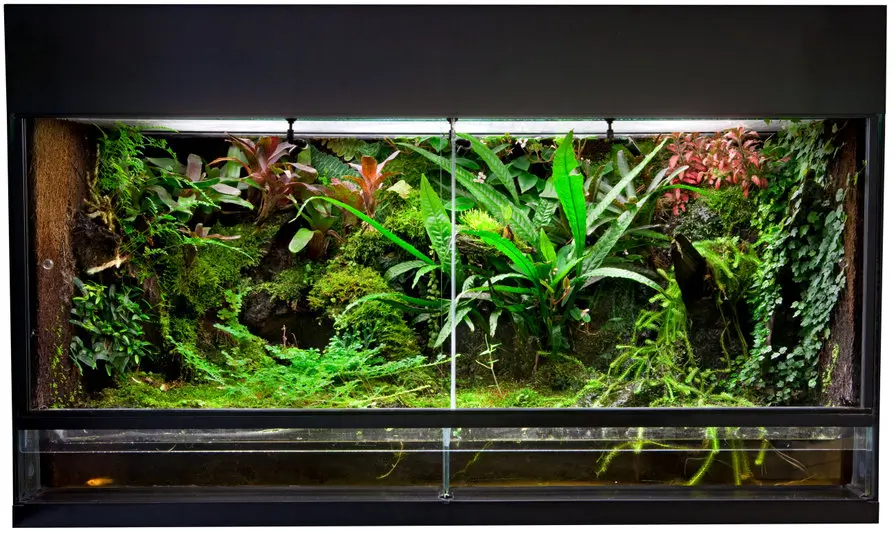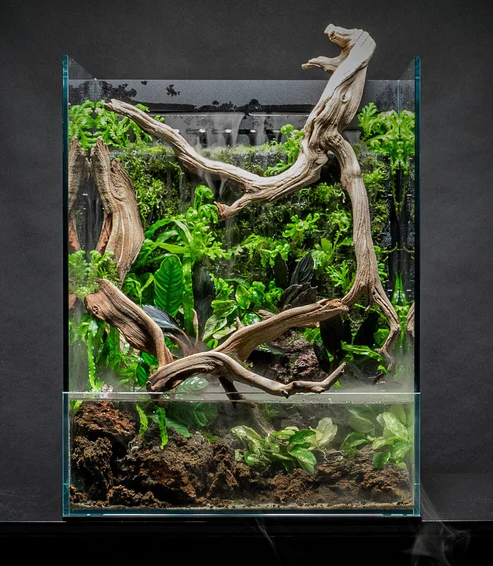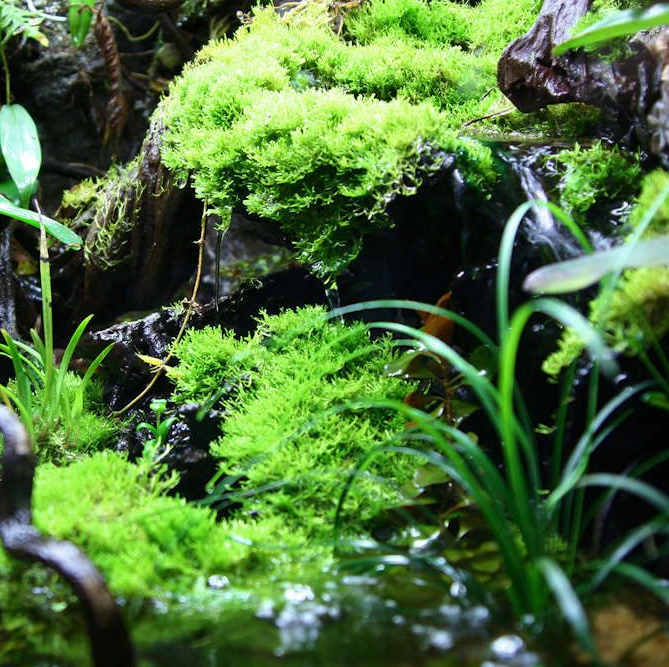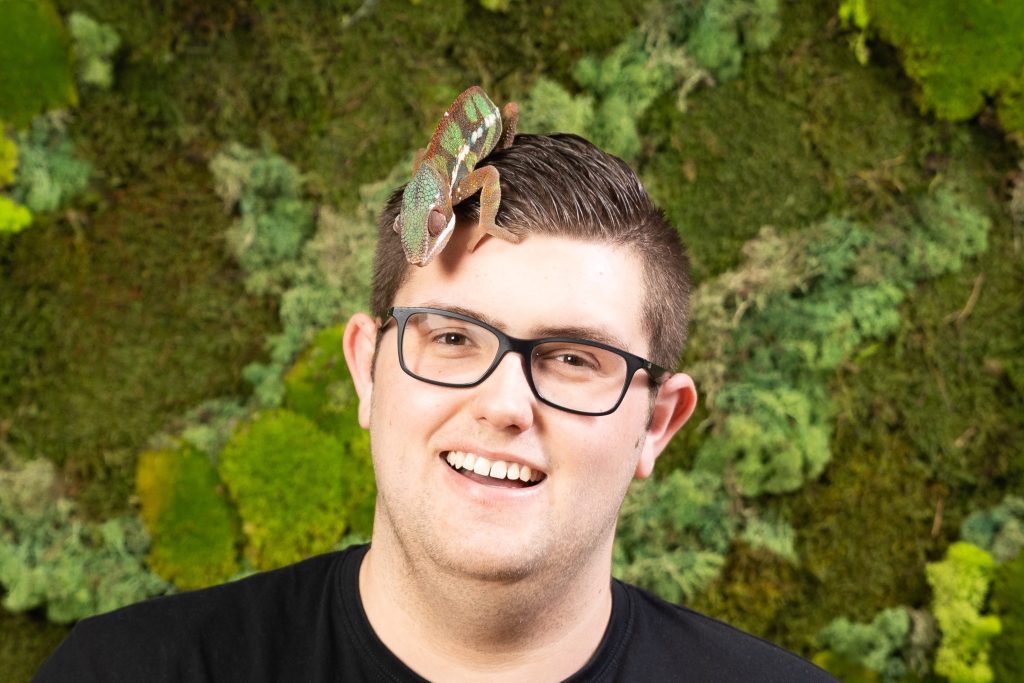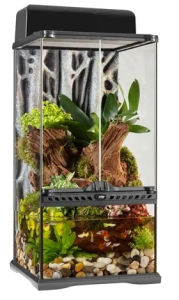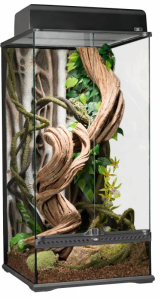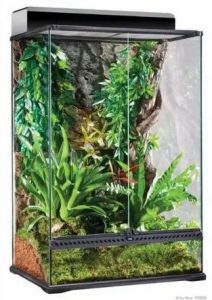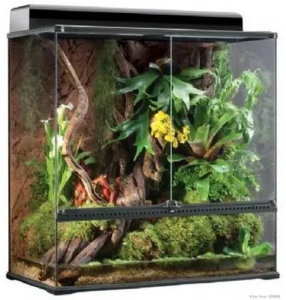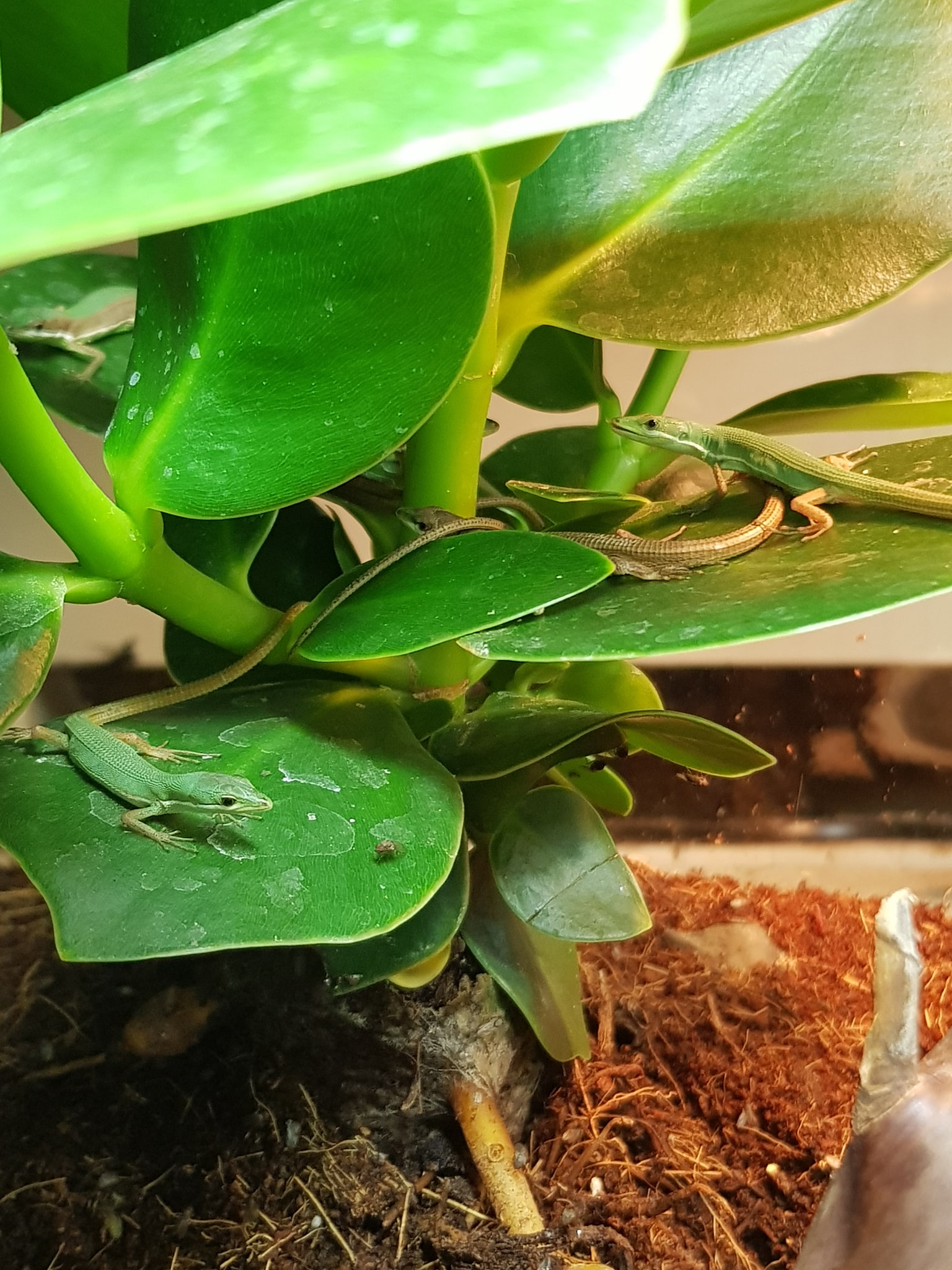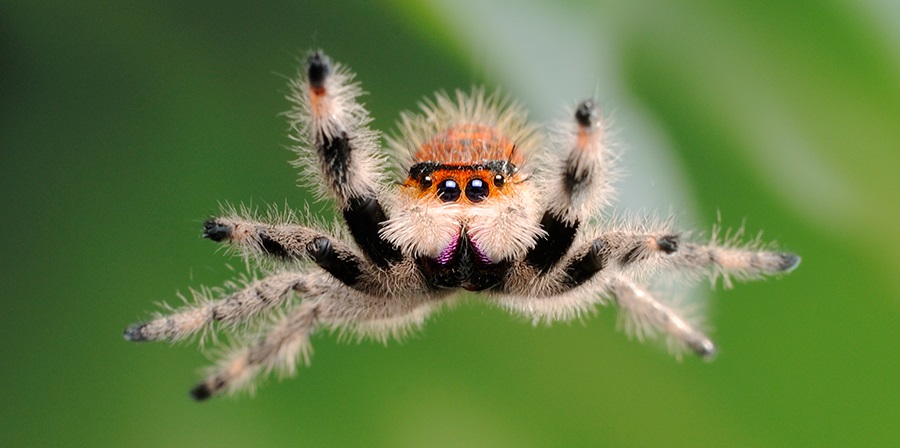Paludarium: A Fusion of Water and Land
Enter the wonderful world of a paludarium – a unique place where water and land come together to create a living work of art. This is no ordinary aquarium, nor is it an ordinary terrarium. It is a harmonious combination of both, a habitat in which water and land elements can coexist.
In this blog we will explore what a paludarium is all about, why it is so fascinating and how you can start setting up your own piece of living nature. Whether you're a seasoned hobbyist, a plant enthusiast or just curious about new adventures in domestic ecosystems, you'll gain an insight into this captivating world here.
What is a Paludarium?
The word "paludarium" is derived from the Latin word "palus", which means "swamp".
A paludarium is a living environment in which both water and land are present. It is therefore a combined ecosystem in which you bring both a piece of water and land into your home.
A paludarium therefore gives you the opportunity to keep both water and land animals and plants together.
What kind of animals can be accommodated in a Paludarium?
A paludarium creates a versatile habitat in which animals can thrive both on land and in the water. This makes it suitable for various types of frogs, toads and turtles. Certain lizards, such as anoles and water dragons, also love water and therefore need a generous water area in their habitat. Even some species of fish, such as lungfish, thrive in an environment that offers both land and water.
amphibians: Different types of frogs, toads and salamanders are suitable for one paludarium. They need both water and land to thrive.
Reptiles: Some reptiles, like water turtles, terrapins and lizards that like a humid climate can do well in one paludarium life.
A paludarium provides a versatile living environment for animals that can thrive both on land and in water. This makes it suitable for various frogs, toads, turtles, lizards such as anoles and water dragons, and even certain fish species and shrimp. It also provides a habitat for riparian inhabitants such as snails and crabs.
Fishing: Paludaria provide space for different species fish that can both swim in the water and rest near the water. Think of species such as bettas, gouramis, killifish and some small cyprinids.
Riverside residents: Animals such as snails, crabs and shrimps feel at home in the transition zone between land and water.
It is important to remember that different animals have different nutritional needs temperatuur, humidity, nutrition and living environment. Before you put animals in one paludarium places, you should carefully research their specific requirements and make sure that the paludarium is well equipped to meet those needs. You also have to consider the size of it paludarium and the compatibility of the animals and plants kept.
Which Plants Can Be Used in a Paludarium?
A paludarium provides a diverse environment for plants that thrive both in water and on land.
When choosing plants for you paludarium it is important to take into account the light requirements, humidity, and size of the plants, as well as the needs of the animals living in the paludarium are held.
A diverse selection of plants can help create a natural-looking and balanced ecosystem.
Marsh plants: These plants grow in the transition zone between water and land. Some examples are Acorus, Cyperus, and some types of Iris.
Ferns: Several types of ferns can thrive in a humid environment paludarium. Think of species such as the finger plant (Adiantum spp.) and the royal fern (Nephrolepis spp.).
Bromeliads: These colorful plants can grow on land or on a support structure. They like high humidity and provide visual interest.
Orchids: Many orchid species feel at home in the humid and shady conditions of a paludarium. They can be attached to driftwood or other structures.
Suitable plants for a Paludarium include marsh plants such as Acorus and Iris, various types of ferns, colorful bromeliads, orchids that can be attached to surfaces, marsh grasses such as Cyperus papyrus, aquatic plants such as water lilies and vallisneria, climbing plants for vertical spaces and various types of moss for covering surfaces.
Swamp Grasses: Species such as the papyrus plant (Cyperus papyrus) add interesting texture to the paludarium and grow well in humid conditions.
Aquatic Plants: Aquatic plants such as water lilies, vallisneria, and ludwigia can be used in the aquatic part of the paludarium. They provide oxygen production and create a natural-looking aquatic environment.
Climbing plants: Some climbing plants can be used to fill vertical spaces, such as Philodendron, Epipremnum, and Hoyas.
Moss: Different types of moss, such as java moss and peperomiamo, can be used to cover rocks, wood, and other surfaces.

What do you need for a Paludarium?
When setting up a paludarium there are several essential components and supplies that need to be considered. Here is an overview of the elements you need to create a successful and balanced paludarium:
A Paludarium: Choose suitable glasses paludarium with a watertight part at the bottom for the aquatic part and a dry part at the top for the terrestrial organisms.
Substrate: For the land part you have a suitable one substrate necessary, depending on the plants you want to use. This can be coconut fiber, soil, tree bark or a mixture of these materials.
Water section: Provide a watertight compartment in the lower part of the container. This can be done by adding a layer of waterproof sealant, epoxy or a plastic insert.
Water pump and filter: If you keep fish in the aquatic area, you may have one small water pump and an filter necessary to keep the water clean and circulating.
Lighting: Pick the right lighting based on the plants you want to use. Plants have different light needs, so make sure you have suitable ones lighting for both the water and the land part.
Heating and thermostat: Depending on the types of animals and plants you keep, a heating element and an thermostat are needed to get the right one temperatuur to maintain.
A suitable glass paludarium forms the basis, with clearly separated water and land areas. Choosing the right substrate, a suitable water filter, suitable lighting and effective heating with a thermostat are crucial. Maintaining and controlling the correct humidity and ventilation is also an essential part. In addition to these functional elements, a natural design also plays a crucial role. This includes various plant species, moss, wood, cork and stones to create an authentic and balanced living environment.
Decorations: Add rocks, wood, branches, moss, shelters and other decorative elements to create a natural environment.
Plants: Choose suitable plant species for both the aquatic and terrestrial areas of your paludarium. Provide variation in size, texture and height.
Animals: Choose animals that are suitable for a paludarium, such as frogs, toads, salamanders, turtles, fish, and other appropriate species.
Humidity and Ventilation: Get the right one humidity and ventilation to keep the environment comfortable and healthy for both the plants and animals.
Control and monitoring: Use case thermometers, hygrometers and possibly others measuring instruments around temperatuur and monitor humidity.
Maintenance tools: Care for tools such as a water sprayer, tweezers and net to care for plants and feed animals.
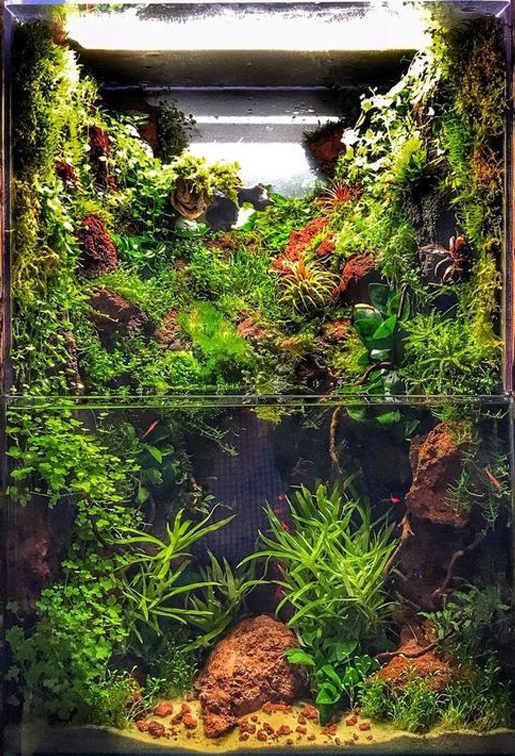
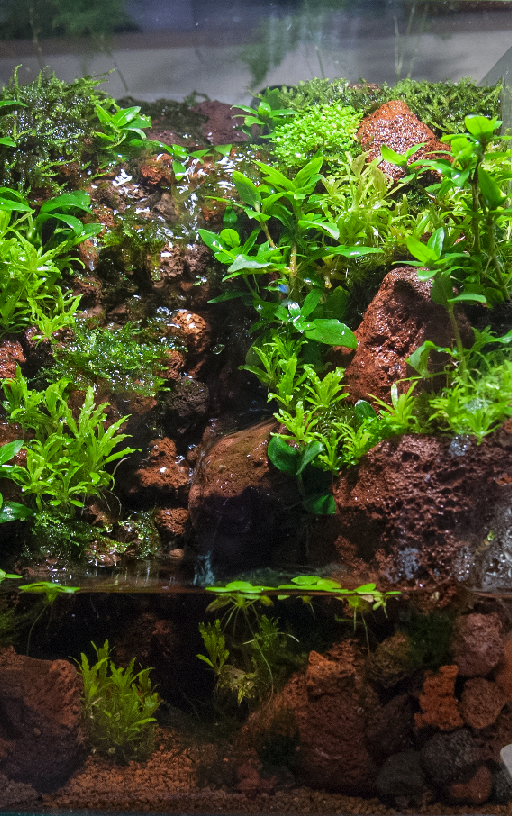
Need help?
If you need help starting your own Paludarium, you can always contact the experts at the Reptile world of Avonturia. They are ready for all your questions.
You can also take a look at our page for more information Reptile world.
Conclusion
With a paludarium you get the chance to create a lively and versatile environment in which animals from land and water can coexist. From frogs singing their distinctive song to colorful fish gliding through the water, from lush ferns sprawling to air plants clinging to wooden trunks, every element of this miniature ecosystem contributes to the mesmerizing symphony of life.
A paludarium offers the opportunity to create a lively and versatile environment in which both terrestrial and aquatic animals coexist harmoniously. With the right knowledge and dedication you can create your own piece of living nature.
Whether you are a seasoned enthusiast looking for new challenges, a plant fanatic who wants to bring the green inside, or are just curious about the harmony between water and land, a paludarium has something for everyone. With the right knowledge and dedication you can create your own piece of living nature, a place where wonder and curiosity thrive. So, step into the world of the paludarium and let yourself be carried away by the unique combination of water and land.


